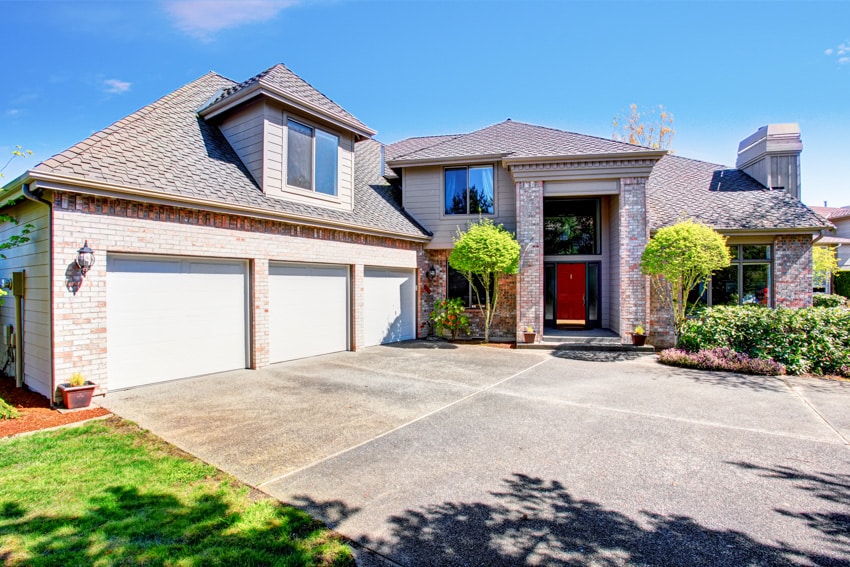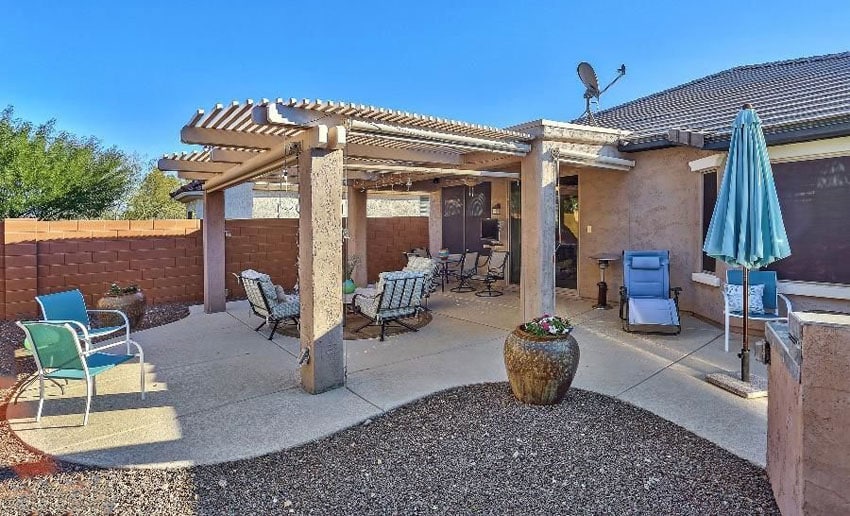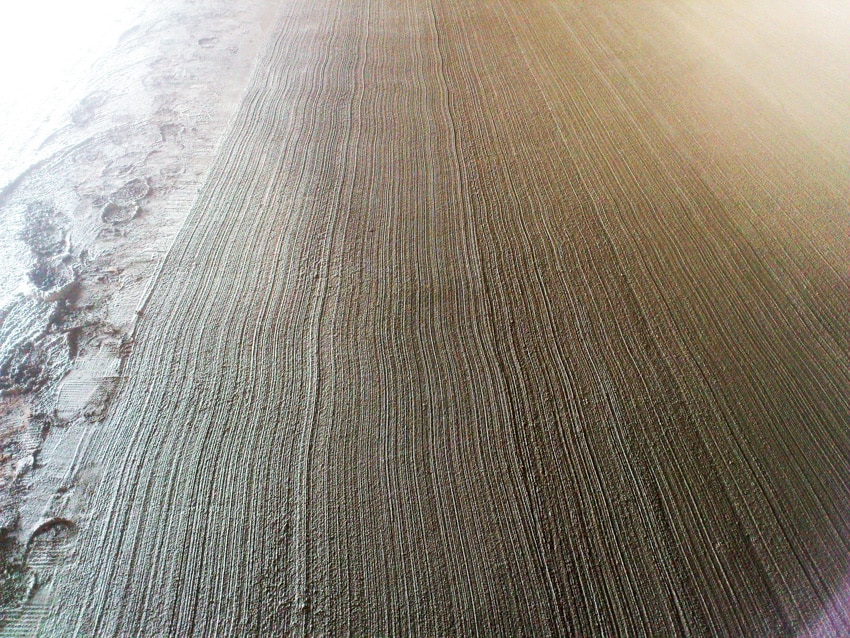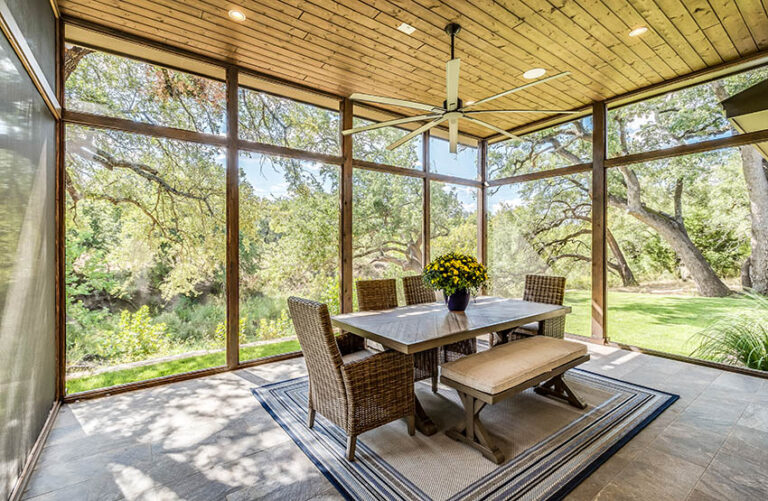Should You Use Salt Finish Concrete? Pros and Cons
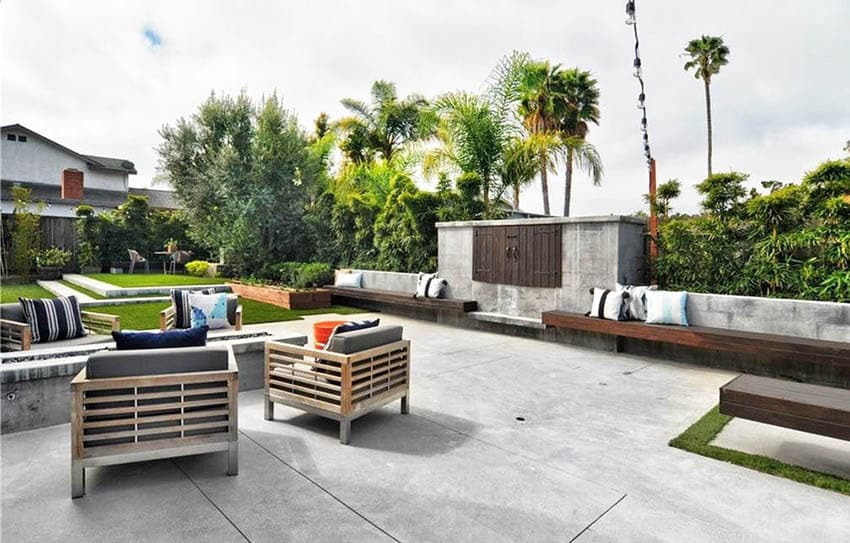
There are many finishes available for concrete surfaces. One such method is a salt finish over concrete. In this article, we’ll take a look at how homeowners can use it.
What Is Salt Finish Concrete?
Salt finish is hands down a great and cost-friendly way to dress up what would normally be a regular or average concrete surface.As the name suggests, the material consists of salt in its application. It can be achieved by pressing rock salt, preferably that of course texture, onto the surface of freshly laid concrete and then waiting for said concrete to cure and be set out.
Once the cement has been set and all done, the salt is washed away. Salt is a soluble material and how this is usually done is that it’s being flushed out with a stream of running water. This results in a surface with random indentations caused by the granules while still in a solid phase. This leaves behind a very textured look that feels contemporary and weathered at the same time.
It would be worth noting that a rock salt finish is most often seen and used in hotter humid regions. It is very rarely seen in regions where the weather may be colder. The reason behind this is that in cold weather, there’s the tendency for water to get trapped and freeze in the indentations formed by the granules. This can cause the surface to break or splinter into smaller pieces, ultimately ruining the quality of the texture.
Rock Salt Concrete Finish
Rock salt concrete finish is considered one of the older or more conventional types of decorative concrete finishes. Because of the nature of its material and in the way that the texture is accomplished, it has become quite popular in regions where there isn’t a lot of cold weather or a lot of snow.
Concrete can be pretty direct or straightforward all on its own. A homeowner doesn’t have a lot of options when it comes to dressing it up or putting in any type of decorative aspect to its finished texture. This is where a rock salt finish option comes in. An interesting texture can be added to any hardscape for a small additional cost.
In this day and age, the market has been overrun with decorative finishes that have been prefabricated or are readily available in the market. This is why these finishes have had a bit of a decline in its popularity. However, hardscape designers would insist that if there is a need to design and decorate cement and still maintain its look and feel; they would insist that rock salt finishes would still be the way to go. Read more about our guide on the different concrete floor finishes on this page.
Salt Finish Pros And Cons
Pros of salt finish concrete:
Unique Look – Aesthetics can be tough as far as masonry is concerned. It has a very utilitarian feel to it. However, thanks to this kind of finish, it can be easily remedied. This texture feels stylish and the look it lends out can be distinctive.
Can Be Used With Colored Concrete – It’s a great way to add some details to the floor without making it look overdone. It’s subtle, but ironically, it is also quite noticeable. And the best part in all of this is that it can even be used for colored cement.
Inexpensive to Install – This finishing method is affordable and easy to install. Customized concrete options can rack up and break the bank really quickly, and if someone who does hardscape isn’t careful about it, it can totally derail the progress of a project, but this isn’t the case here.
This texture accomplishes a very sophisticated and luxurious appearance while keeping expenses at bay. Costs are kept low because there aren’t a lot of materials used. Anyone on a budget can easily add the details they want. Read more about our guide on the different concrete driveway finishes here.
Better Slip Resistance – The small pockets, indents, and imperfections in the finished surface help provide traction and prevent slipping.
Cons of salt finish concrete:
Needs Professional Installation – To ensure there is equal distribution across the surface and proper application, it’s recommended to use a skilled contractor. If you do decide to DIY this project, you’ll want to use a trowel and broom or brush rather than a roller.
Can Crack in Cold Climates – The accumulation of material left over on the surface can mean water accumulates. In freezing and thawing conditions, this can have an adverse effect on the patio, leading to potential cracks and damage in the finish.
Salt Finish Application Cost
Concrete has always been and will always be one of the top choices to consider if the aim is to get an attractive and durable driveway. Essentially, it is a mixture of cement, aggregates, and water.
The cost for this can vary a lot as it depends on the thickness of the application, the materials being laid, and the actual area of the installation.
A typical driveway with this finish, averaging around a 24 x 24 square foot size, can range from $5,000 and upwards depending on the pattern and the preferred add-ons when laid out professionally by the contractors.
However, for the more enterprising type, if DIY’d, the cost can go down tremendously to only a range of $1,000 or more. This is why these finishes have become quite popular. The concept is pretty easy, the materials are readily available, and it can be DIY. Read more about our guide on salt finish concrete pool deck here.
Concrete Broom Finish Vs Salt Finish
Concrete broom finishes are a pretty standard type of surface treatment for driveways. The mixture is troweled into a smooth surface consistency and, using a broom, “swept in” to create traction lines. Surface traction is particularly important for texture applications and cement materials that are outdoors, especially if there are tires involved.
A slippery driveway can turn out to be a dangerous one. A broom finish in the driveway makes it not only aesthetically appealing but traction-friendly as well. The skid resistance is better for tires, especially in adverse weather conditions.
On the other hand, salt finishes are most often used in the areas surrounding pools or where other outdoor ties might be involved. The concrete finish is smooth, but to offset that a little and make it a little less slippery, salt is added to give it texture. Once the surface has set, the rock granules leave behind interesting indentations that make for an uncommon surface treatment.
Both types of cement finishes have their merit. Broom finishes provide more traction, whereas salt finishes provide more aesthetics. It all boils down to basic preference.
It goes without saying, though, that a salt finish certainly has a more unique and luxurious look and feel to it and is something that is worth considering when deciding on a pool deck or patio finish. See more related content in our article about the different types of pool finishes on this page.



